Friday 17th April 2020
written by Alison Ure
Good morning everyone,
Its another beautiful day in Turkey, the sun is shining and we’ll have high of 23 degrees, you’ll need your sunscreen today. I hope you enjoyed last nights meal and slept well.
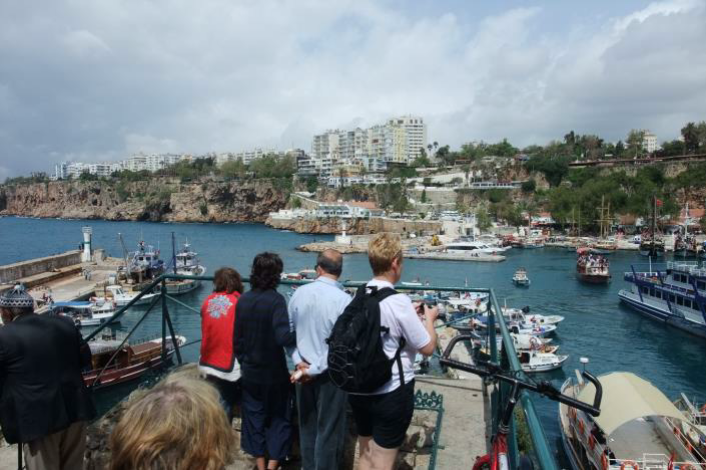
Did you see the tortoises at breakfast if not their photos are attached along with many of the sites you would have seen yesterday, the old harbour, old ottoman houses and hidden gardens. How about Hadrian’s gate? wasn’t the architecture wonderful? I hope you enjoyed the museum too.

You will need to get your packed lunch from the little grocers 100 m down the street and the bakers around the corner. You’ll find the food here very fresh, very tasty and very cheap! My go to packed lunch is fresh bread, cheese, sun ripened tomatoes and crisps, yummy!
There will always be a 10 gallon water container on the bus for you to refill water bottles from. Please try and reuse water bottles rather than buy more plastic ones. If you want to take a change of footwear on the bus that’s fine, there is plenty of room it means you always have the necessary shoes/boots to hand.
So this morning we’ll have an overview of the trip and geology of the area. This map gives you a rough idea of the area the trip covers, a photo of slightly more detailed ones is attached.

You can see Antalya in the east. The trip roughly goes around the edge of the Teke Peninsula. If you draw a line from Antalya west to the coast, everything below is the Teke peninsula, also known as Lycia.
Today we will go inland north and slightly west to view the Antalya plain and learn about its formation.
Tomorrow we set off around the coast to Kas which is at the bottom of the map.
We spend 4 nights in Kas visiting a variety of places before moving on to Kayakoy. This is situated on the west of the Teke Peninsula, and you can find it on the diagrammatic map at the beginning of the hand-out. After 2 nights in KayaKoy we drive across the mountains from west to east back to Antalya. Many of the ancient sites we will visit you will have learnt a bit about in the museum yesterday afternoon.
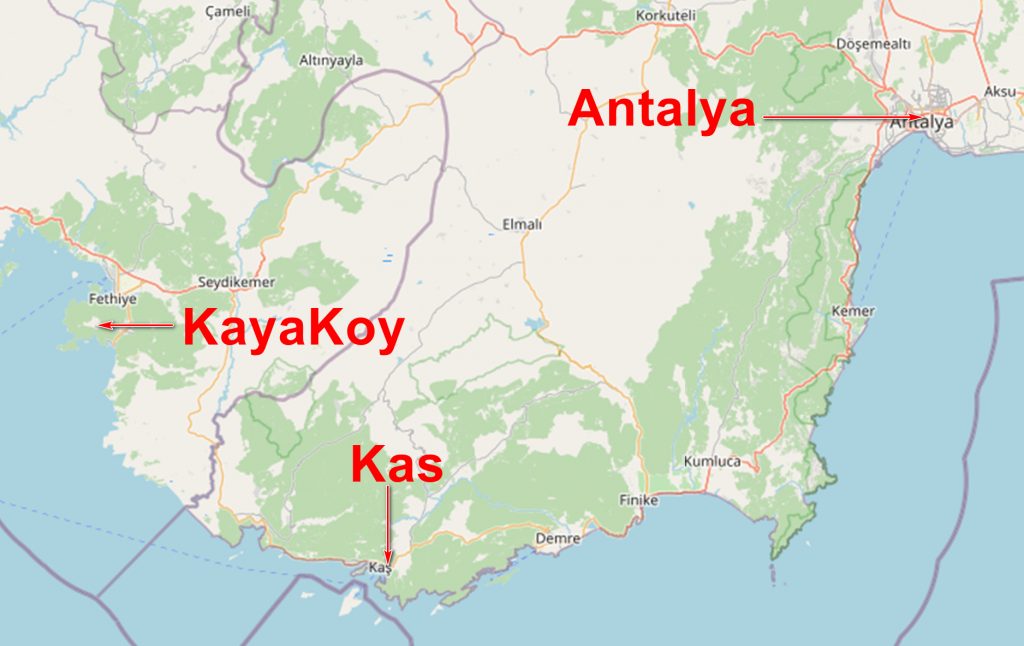
As with any trip timing is important so we get to see everything. At all the sites we visit ancient or geological, you will be given an introduction as to what there is to see then time to observe by yourself with a time limit to be back on the bus. As people get spread out on these occasions I have a whistle which I blow when it’s time to go!
The striped green geology is basically ophiolites, remnants of the sea floor of the Tethys ocean pushed up on land as the ocean closed with the African plate moving North and twisting in an anticlockwise direction as it does so. The East section of ophiolites was/is pushed west and the western section was/is pushing south east. This has the effect of screwing everything in the area onto a southwest/northeast alignment. The section in the centre, the Bey Daglari formation, is Cretaceous limestone with a bit of Miocene thrown in for good measure but mostly eroded away. On the attached photo of the map the ophiolites are blue and the limestone green and yellow. (The original maps are in lock-down at Durham university so we don’t have access to the exact key!)
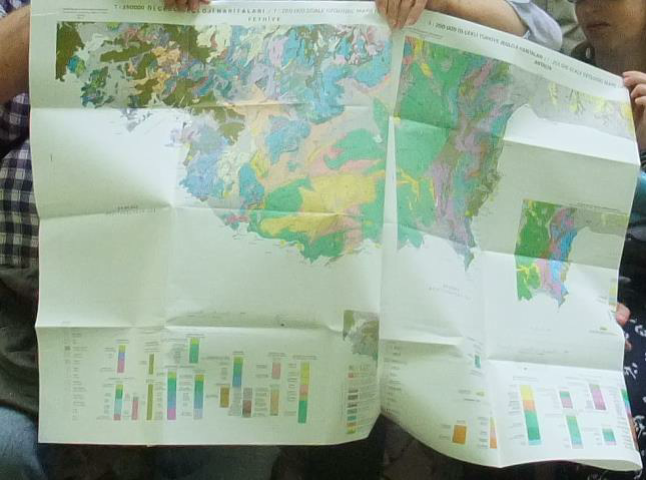
Any questions?
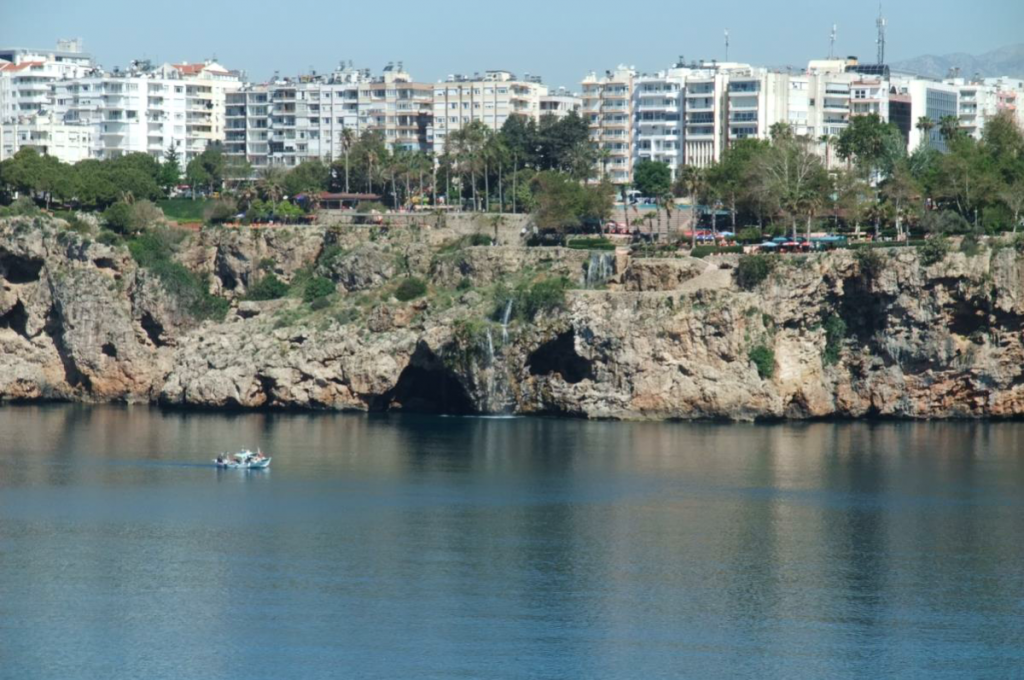
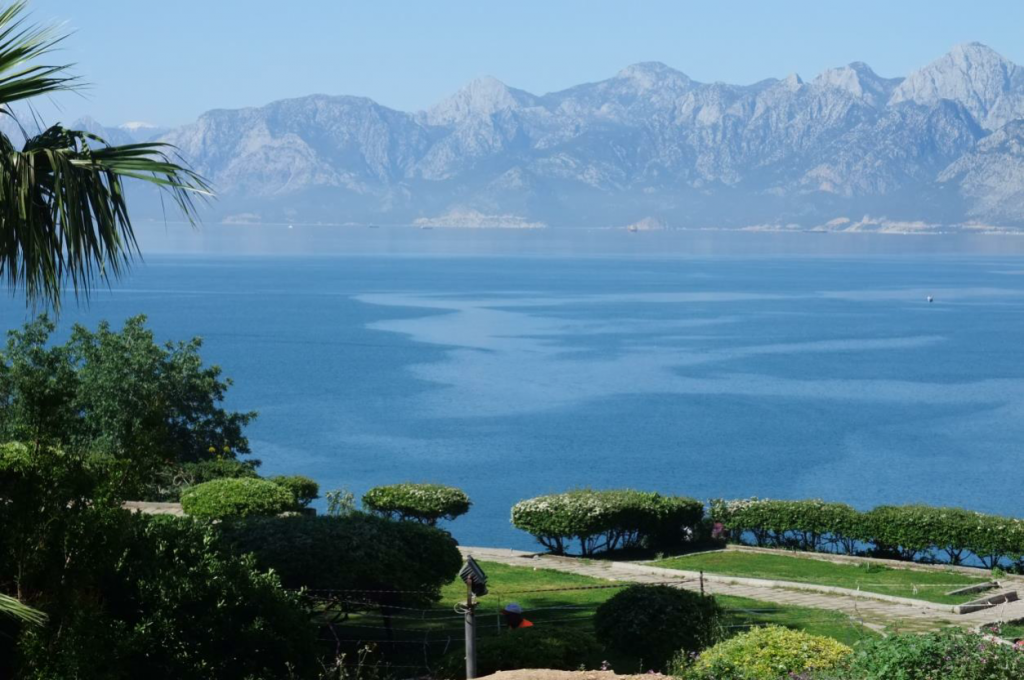
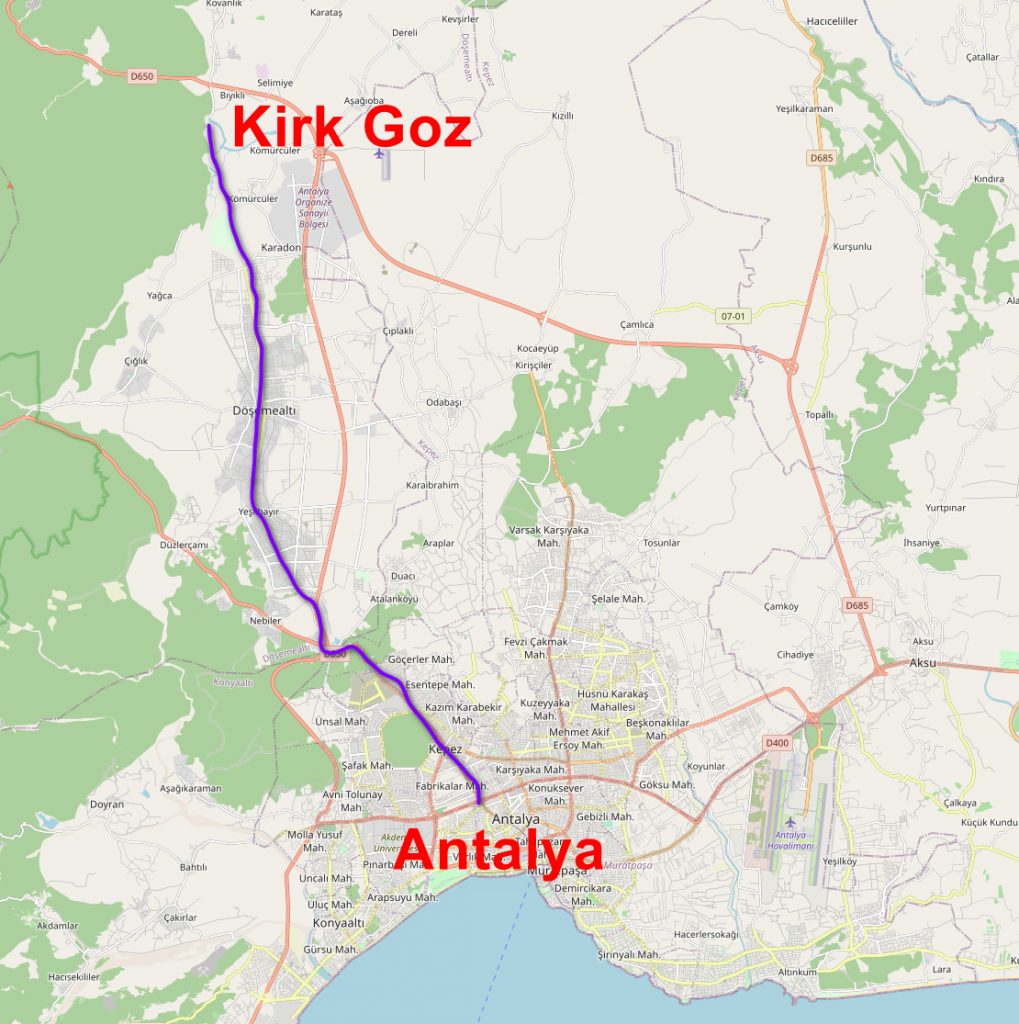
Now we will walk to the bus taking a look at the edge of the travertine platform Antalya sits on and look up at the mountains across the bay thrusting westwards. Once aboard the bus we’ll drive for roughly an hour north west to the edge of the mountain range. Take a look at the sketch done by our first leader Ali Seydar in 2012 showing the current geology of the Antalya plain. It shows the limestone mountains tilted up by the Antalya nappes, ophiolites, pushing against them, and underground water stored at the base of the limestone. Where the soft rock meets the hard rock springs appear and that’s where we’re now headed to Kirk Goz.
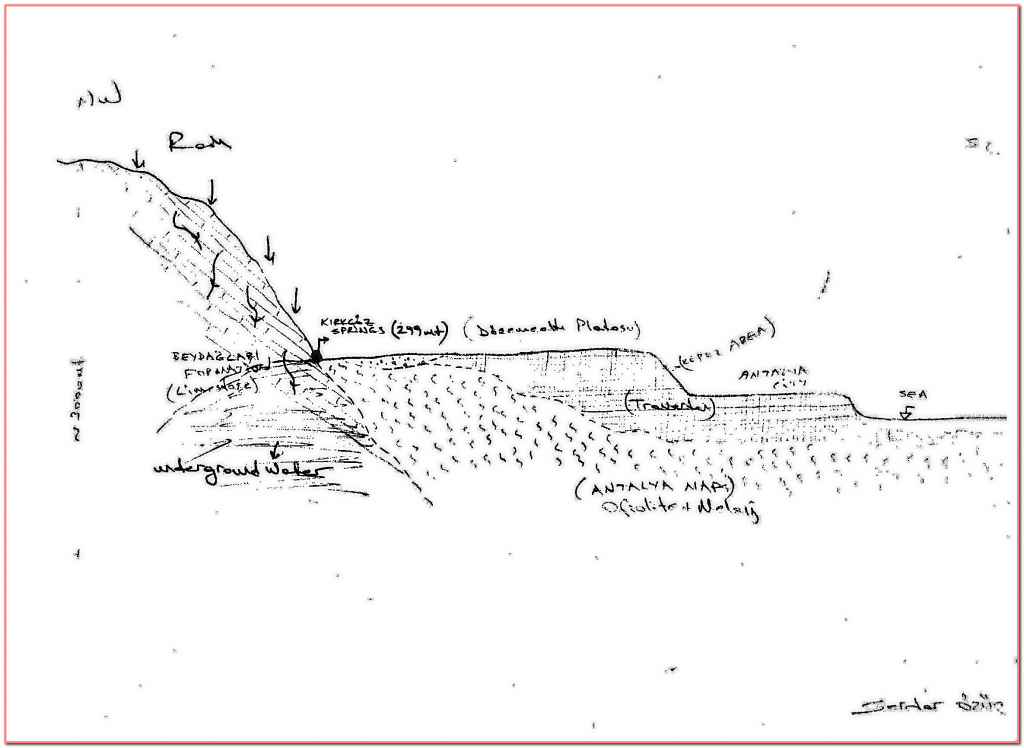

The top of this little hill has a concrete structure guarded by a barbed wire fence, but as there is no such thing as trespass in Turkey, we’ll go in anyway! We have a Turkish guide and Turkish professor with us so are officially legit!! I can’t remember what the wire is guarding but I’m sure one of our Turkish leaders might be able enlighten us. Tolga do you remember? It gives fabulous views over the Antalya plain showing the springs. The reason I know Turan is such an excellent driver is that in the first year, he drove the coach to the top up that windy little loose gravel road, turned the coach at the top and got it down safely, to this day I’m not sure how!! We had all walked down after entering the barbed wire area with care, and our hearts had recovered form the scary drive up! Now we will walk up and down which gives us an opportunity to view the many fossil assemblages on the way. Sorry I’ve not recorded many! The lesson I learnt from this site in 2012 was always recce every site yourself! Our esteemed Turkish leader that year had suggested we visit this site after Karain cave as an extra site visit at the end of the trip. He assured us it was OK to drive up to the top! it is a great place to visit but the bus stays firmly at the bottom now. You should be all right in walking sandals but the gravel is loose so you may prefer walking boots.
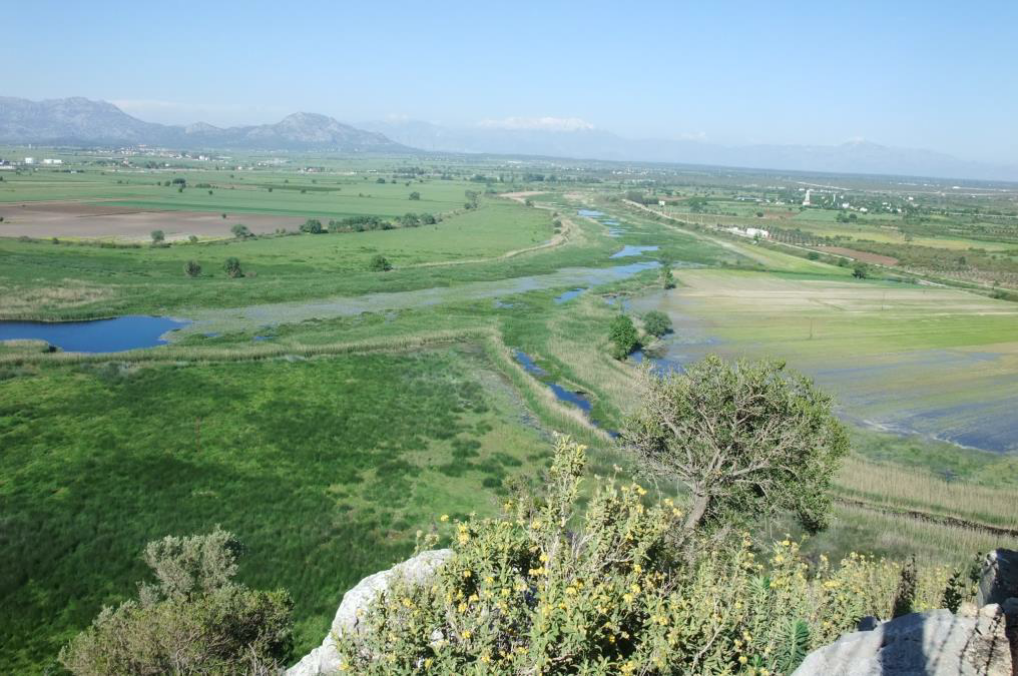
Well that was pleasant but I expect you’re all ready for lunch now. Pick a rock or tussocks and enjoy the view of the mountains before we head back down to the city studying the travertine on the way down.
The travertine on this plain has been laid down at different times and as we go back down towards the city we go over ‘steps’ indicating the different times of the process occurring. I think there are 3 steps in all each about 10m or more in height. Remember the view of the Travertine platform across the harbour before we boarded the bus? I think at this point I need a geologist ie David, or maybe Tuncer, to step in and tell us a bit more about the formation of this particular plain. We will see travertine formation actually occurring at the end of the trip.
When we get back to the hotel you are free to eat dinner at one of the many restaurants near the hotel. Before that in the bar I will be giving a short introduction to a meteoritic impact event to prepare you for Sundays day out. Don’t stay out too late, tomorrow is a long day and we need to be up and out of the hotel complete with luggage at 8 am sharp!.
I hope you’ve enjoyed your day if you have any questions fire away.
I’ll see you in the bar this evening.